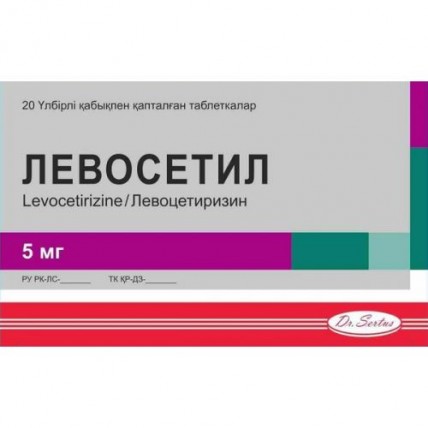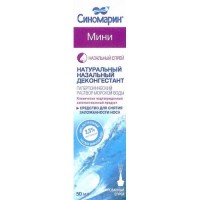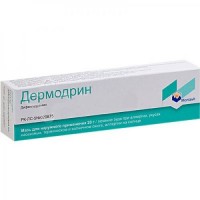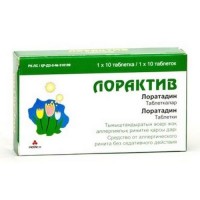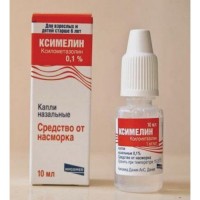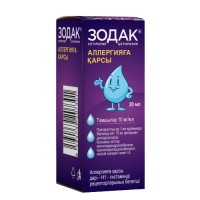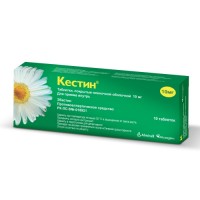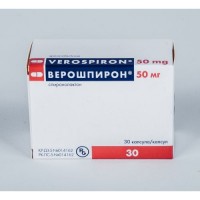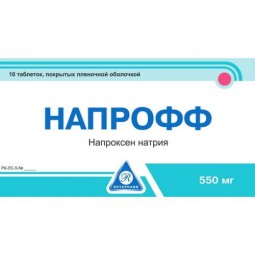Levosetil 20s 5 mg film-coated tablets
- $13.60
Instruction for medical use of Levosetil Torgovoye medicine name Levosetil Mezhdunarodnoye unlicensed name Levotsetirizin Lekarstvennaya Tablet form, film coated. Structure One tablet contains active agent - Levotsetirizina dihydrochloride of 5 mg excipients: lactoses monohydrate, cellulose microcrystalline, silicon dioxide colloidal anhydrous, magnesium stearate Structure of a cover: Опадри® white Y-1-7000 (gipromelloza, titan dioxide (E171), makrogol/PEG). Description. Tablets, an oval form, biconvex, film coated white color Pharmacotherapeutic group Drugs for treatment of diseases of a respiratory system. Antihistaminic drugs of systemic action. Piperazin derivatives. Levotsiterizin. The ATX R06AE09 code the Pharmacological Pharmacokinetics Pharmacokinetic Parameters properties of a levotsetirizin change linearly, are time - and dose-dependent, have low individual variability and almost do not differ from those a tsetirizin. Levotsetirizin is quickly soaked up after intake. Meal does not influence extent of absorption, but reduces its speed. The maximum concentration in blood plasma is reached in 0.9 hours after reception of a therapeutic dose and makes 270 ng/ml after single and 308 ng/ml - after repeated use in a dose of 5 mg. Equilibrium concentration in blood plasma are reached in 2 days. The volume of distribution is 0.4 l/kg, linking with proteins of plasma - 90%. The bioavailability reaches 100%. Less than 14% of drug are metabolized in a liver by O-dealkylation with formation pharmacological of an inactive metabolite. Excretion of drug happens generally due to glomerular filtration and active canalicular secretion. Elimination half-life (Т½) makes 7-10 hours. The general clearance - 0.63 ml/min. Levotsetirizin does not collect. It is completely brought out of an organism in 96 hours. 85.4% of a dose of drug are removed in not changed view with urine, about 12.9% - with a stake. At patients with renal failures (clearance of creatinine & lt, 40 ml/min.) the clearance of drug decreases, and Т½ is extended (so, at the patients who are on a hemodialysis, the general clearance decreases by 80%) that demands selection of the corresponding mode of dosing. Less than 10% of a levotsetirizin are removed during a hemodialysis. Levotsetirizin gets into breast milk. The pharmacodynamics Levotsetirizin, (R) - an enantiomer of a tsetirizin, the selection antagonist of a histamine, is inhibitor of peripheral Hl-histamine receptors to which affinity is twice higher, than at a tsetirizin. Levotsetirizin influences a gistaminozavisimy stage of allergic reactions and also reduces migration of eosinophils, reduces vascular permeability, limits release of mediators of inflammation. Prevents development and facilitates a course of allergic reactions, has antiexudative, antipruritic effect, has practically no anticholinergic and antiserotoninovy effect. In therapeutic doses practically does not render sedation. Indications At adults and children are more senior than 6 years for elimination of symptoms in the following diseases: - allergic rhinitis (including persistent), - a small tortoiseshell. The route of administration and doses take the Drug inside, irrespective of meal, washing down with a small amount of water, not chewing. Adults and children are more senior than 12 years: the recommended daily dose makes 5 mg. Children aged from 6 up to 12 years: the recommended daily dose makes 5 mg. The dose decline is not required to elderly patients (on condition of normal function of kidneys). At patients with chronic kidney disease the frequency of reception should be established individually according to function of kidneys. The Clearance of Creatinine group (ml/min.) the Dose and Normal rate ≥ 80 1 tablet a day Umerennaya 50-79 1 a tablet in day Srednyaya 30-49 1 a tablet each two days Heavy & lt, 30 1 tablet each three days the End-stage of a renal failure – the patients undergoing dialysis & lt 10 is contraindicated to Children with a renal failure the individual correction of a dose taking into account clearance of creatinine and body weight is required. With a liver failure of correction of the mode of dosing it is not required to patients. In case of intermittent allergic rhinitis (symptoms less than 4 days a week or less than 4 weeks) duration of treatment depends on a look, weight and manifestations of symptoms of a disease and is defined by the doctor, treatment can be stopped at disappearance of symptoms and also can be resumed at repeated emergence of symptoms. In case of persistent allergic rhinitis (symptoms more than 4 days a week or lasting more than 4 weeks) therapy throughout the entire period of influence of allergen has to be carried out. There is a clinical experience of use of a levotsetirizin for 6 months in allergic rhinitis and a racemate of a levotsetirizin up to one year in allergic rhinitis and a chronic allergic small tortoiseshell. Side effects At children at the age of 6 - 12 years: - a headache, drowsiness At teenagers of 12 years and adults: - a headache, drowsiness, dryness in a mouth, fatigue Post-marketing experience: The side effects provided below are determined by system and organ classes and frequency as follows: infrequently (≥ 1/100, & lt, 1/10), it is rare (≥ 1/1000, & lt, 1/100), is very rare (≥ 1/10000, & lt, 1/1000), it is unknown (it is impossible to estimate on the basis of available data). From the immune system: it is unknown – reactions of hypersensitivity, including an anaphylaxis. From metabolism: it is unknown – increase in appetite Mental disturbances: it is unknown – aggression, agitation, hallucinations, a depression, insomnia, suicide thoughts from the central nervous system: it is unknown – spasms, paresthesias, dizziness, a tremor, a dysgeusia. From a cardiovascular system: it is unknown – a cardiopalmus, tachycardia. From sense bodys: it is unknown - disorders of vision, dizziness. From heart: it is unknown – a cardiopalmus, tachycardia. From respiratory organs: it is unknown - dispnoe. From a metabolism: it is unknown – increase in appetite. From digestive tract: it is unknown - nausea, vomiting, diarrhea. From kidneys and urinary tract: it is unknown – a dysuria, an ischuria. From a gepatobiliarny system: it is unknown - hepatitis. From skin and hypodermic fatty tissue: it is unknown - a Quincke's disease, medicinal rash, a skin itching, rash, a small tortoiseshell. From a musculoskeletal system: it is unknown – myalgia, an arthralgia. From laboratory indicators: it is unknown – increase in body weight, change of functional hepatic trials. The general disorders and disturbances in the injection site: it is unknown – hypostasis. After the termination of reception of a levotsetirizin there can be an itching. At emergence of any side effects including which are not specified in the instruction it is necessary to see a doctor. Contraindications - hypersensitivity to any of drug components, a tsetirizin, Hydroxyzinum or derivatives of piperazin, - a severe form of chronic kidney disease (clearance of creatinine less than 10 ml/min.), - children's age up to 6 years, - intolerance of a galactose, deficiency of lactase (β-galactosidase) or disturbance of digestion of glucose and a galactose. Medicinal interactions interaction researches with levotsetiriziny were not conducted (including lack of researches with the inductors CYP3A4), researches of racemic connection of a tsetirizin showed lack of clinically significant undesirable interactions (with antipyrine, azithromycin, Cimetidinum, diazepam, erythromycin, glipizidy, ketokonazoly and pseudoephedrine). Small decrease in clearance of a tsetirizin (16%) in a research of repeated doses of theophylline was observed (400 mg once a day), and distribution of theophylline did not change at simultaneous use with tsetiriziny. In a research of repeated doses of a ritonavir (600 mg two times a day) and a tsetirizina (10 mg a day) extent of influence of a tsetirizin increased approximately by 40%, and distribution of a ritonavir considerably decreases (-11%) after simultaneous use of a tsetirizin. Meal does not influence extent of absorption of a levotsetirizin though the speed of absorption decreases. Sensitive patients have a simultaneous use of a tsetirizin or levotsetirizin with alcohol or other central nervous system suppressing activity means can cause in addition decrease in level of attention and deterioration in health. Special instructions during use of drug it is necessary to abstain from alcohol intake. Drug is used with care at patients with the factors contributing to an ischuria (for example, damages of a spinal cord, a prostate hyperplasia) as levotsetirizin can increase risk of an ischuria. Antihistamines suppress the response to allergy skin tests, conducting tests requires the period of washing away lasting not less than 3 days. The itching at the termination of reception of a levotsetirizin can be observed even if such symptom was not observed in an initiation of treatment. Symptoms can spontaneously disappear. In certain cases symptoms can be intensive, treatment resuming can be required then symptoms will disappear. Use at pregnancy and a lactation during pregnancy and a lactation it is necessary to use drug with care. Use in pediatrics does not exist release forms in tablets, film coated, for children under 6 years. It is recommended to use a pediatric form of a levotsetirizin. Influence on ability to driving of motor transport and to control of mechanisms At objective assessment of ability to driving of the car and work with mechanisms is authentically not revealed any undesirable phenomena when assigning of the recommended dose. Nevertheless, some patients can have a drowsiness, weakness and an asthenia at reception of a levotsetirizin. Therefore it needs to be considered at occupation potentially dangerous types of activity demanding the increased concentration of attention and speed of psychomotor reactions. Overdose Symptoms: drowsiness adults, at children – originally can have a concern and acrimony, then a sonlivaost. Treatment: gastric lavage, intake of activated carbon, symptomatic therapy. There is no specific antidote. The hemodialysis is inefficient. The form of release and packing On 10 tablets place in blister strip packaging from a film of polyvinylchloride/polyvinyldichloride and aluminum foil. On 2 blister strip packagings together with the instruction for medical use to use in the state and Russian languages place in a pack from cardboard. Storage conditions At a temperature not higher than 25 ºС. 3 years not to apply a period of storage on expiry date. Prescription status According to the prescription the Producer "Uorld Meditsin Ilach Sang. ve Tidzh. A.Sh.", Turkey Address: Istanbul, Bagdzhylar Ilchesi, Gyuneshli, Evren Makhallesi, Dzhami Yolu Dzhad. No. 50 K. 1B Zemin 4-5-6, Turkey Owner of the registration certificate of Dr. Sertus Ilach Sanayi Ve Tidzharet Limited Shirketi, Turkey Address: 34212 Evren Makhallesi, Dzhami Yolu Dzhaddesi No. 50. Girish Kat. Gyuneshli. Bagdzhylar. Istanbul. Turkey the Name, the address and a contact information (phone, the fax, e-mail) of the organization of the claim (offer) on quality of medicines accepting in the territory of the Republic of Kazakhstan from consumers and responsible for post-registration observation of safety of medicine. OO "TROKA-S PHARMA", Almaty, Suyunbaya Avenue 222-b ph. 8+7 727 251 99 35, +7 727 251 99 45 fax: 8+7 727 252 90 90 +7 701 786 33 98 (24-hour access) pvpharma@worldmedicine.kz.
To develop
To develop
